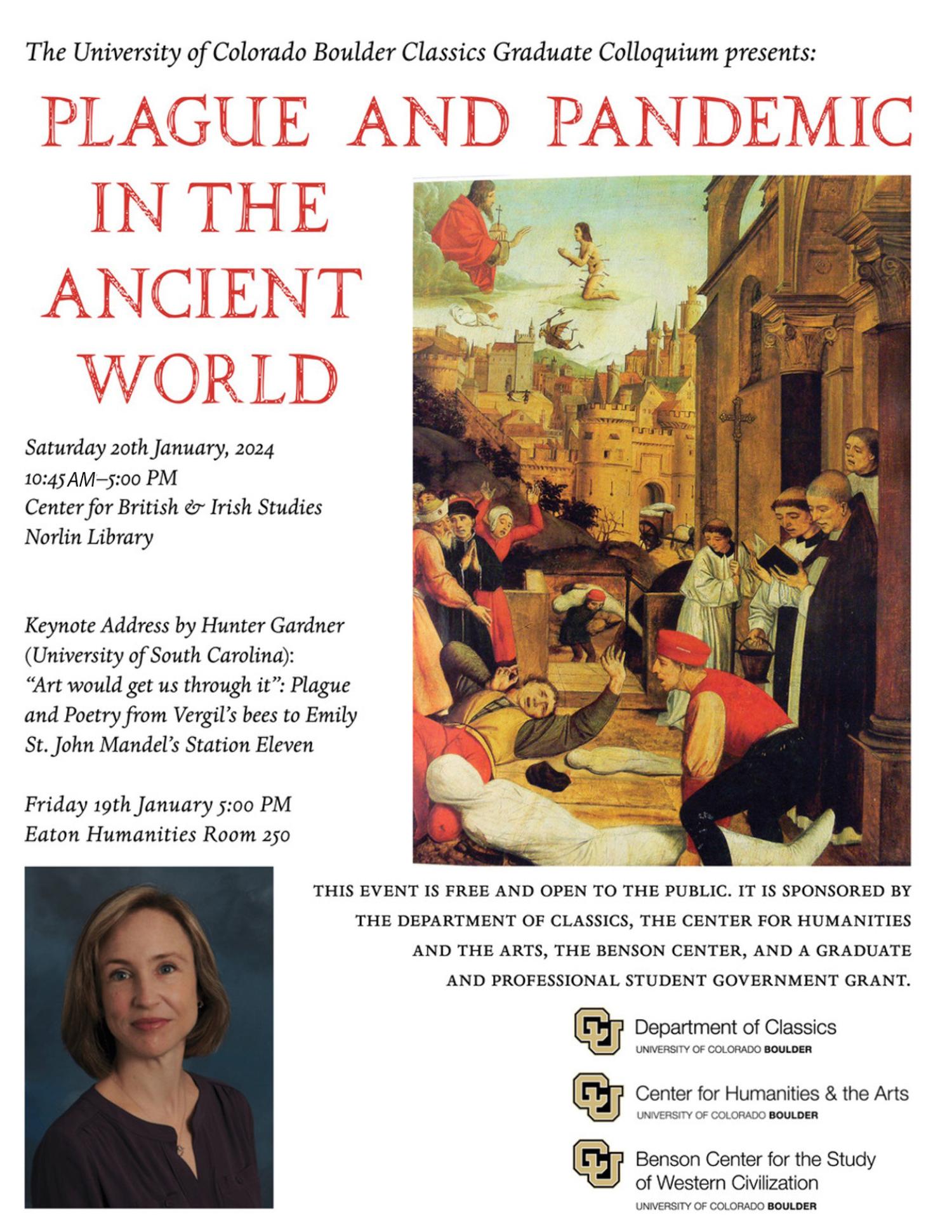“Art would get us through it”: Plague and Poetry from Vergil’s Bees to Emily St. John Mandel’s Station Eleven
“Art would get us through it”:* Plague and Poetry from Vergil’s Bees to Emily St. John Mandel’s Station Eleven
Friday, January 19, 5:00pm
Eaton Humanities #250
Free and open to the public
Download the program
This event is sponsored by the Department of Classics, the Center for Humanities and the Arts, The Benson Center, and a Graduate and Professional Student Government Grant
The historian Livy gives an account of what may be the first recorded instance of art used as a response to combat epidemic disease in the Roman republic. He observes that, in the face of an especially virulent plague (pestilentia, 7.1.7), the Romans imported stage plays (ludi scaenici, 7.2.3) from Etruria, a measure that, while having little impact on the actual disease, left an indelible imprint on the origins and development of Rome’s literary arts. The poet Vergil, Livy’s near contemporary, intuits a similar connection between art and pestilence in his Georgics, a poem famous for its depiction of the poet Orpheus, whose loss of Eurydice and own tragic death result in a morbus (“disease”) besetting the beehive of his rival—and the author of his death—Aristaeus (G. 4.318, amissis…apibus morboque fameque; cf. 4.397). Song, viewed in ancient Greco-Roman culture as a pharmakon (“drug, remedy”) and means of assuaging grief (Bion, frag. 3; Theocritus 11; cf. Eur. Med. 190-98; Segal 1989, 10-17), is put under scrutiny in the onset of plague, whether an actual or imagined outbreak. This paper examines why ancient Romans turned to art when experiencing epidemic disease: what resources or healing powers did art, especially poetic arts, provide? Both Livy and later St. Augustine (De. Civ. 132) were skeptical of what the newly imported “stage plays” offered, but, as the playwright Artaud suggests (1958, 27), theatrical arts powerfully reshape collectives with a force equal to that of epidemic disease and provide a source of cohesion amidst a rapidly disintegrating body politic. After observing the relationship between art and epidemic disease in relatively confined contexts of ancient Rome, Professor Gardner will turn to the recent flourishing of art as remedy during the COVID 19 pandemic. She considers common threads that bind ancient artistic responses to plague to contemporary ones, taking Mary Shelley, Albert Camus and Emily St. John Mandel as instances of the latter: ancient and modern responses both operate to forge collective experiences and values, yet social isolation (common during the COVID, but not regular practice in the context of ancient disease) and the global scope of the recent pandemic complicate and enrich the role of art in effecting cohesion and promoting a shared vision of the human condition.
* Mo Willems, as cited in the New York Times (April 2023).


